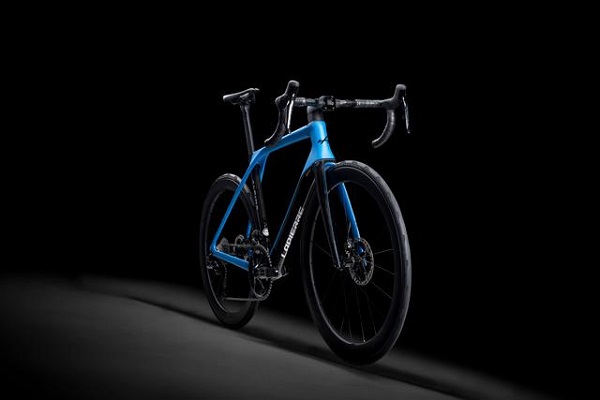
cycling training - How to improve speed on the flat with the racing bike secrets and training methods with COMPLETE TABLE AND TRAINING CARD
Optimizing Speed on the Flat in Road Cycling: Principles, Training Methods and Detailed Sheet
Improving speed on the flat is a primary goal for many road cyclists, both at the recreational and competitive level. This ability is influenced by a complex interaction of physiological, biomechanical and environmental factors. Targeted and structured training, together with an understanding of biomechanical principles, form the basis for a significant increase in performance.
Fundamental Physiological Principles:
Effectiveness in cycling on the flat depends largely on three main physiological components:
Aerobic Power (VO₂max): This represents the maximum amount of oxygen that the body can capture, transport and use for energy production. A high VO₂max is crucial for sustaining prolonged high-intensity efforts, such as those required to maintain high speeds on the flat.
Lactate Threshold (LT): Indicates the exercise intensity beyond which the production of lactate exceeds its capacity to clear it, leading to rapid muscle fatigue. Raising your lactate threshold allows you to sustain higher power outputs for longer periods.
Pedaling Efficiency: Refers to your ability to convert metabolic energy into mechanical work on the pedals. Efficient pedaling reduces energy loss and allows you to generate more power for the same amount of energy used.
Essential Biomechanical Principles:
In addition to physiological aspects, pedaling biomechanics play a key role in optimizing speed on flat surfaces:
Pedaling Cadence: The number of complete rotations of the pedals per minute. Optimal cadence varies individually and based on conditions, but generally falls between 85 and 105 rpm on flat surfaces to maximize efficiency and reduce muscle fatigue.
Pedaling Technique: A smooth, rounded pedal stroke that actively engages all the leg muscles throughout the rotational cycle (push, pull, scrape, and lift) allows you to generate power more uniformly and efficiently.
Riding Position: A correct riding position, which optimizes joint angles and muscle activation, is essential to maximize power output and minimize injury risk.
Aerodynamics: Aerodynamic drag is the main force that opposes movement at high speeds. Adopting an aerodynamic position (bent torso, tight elbows), using close-fitting clothing and aerodynamic components (helmet, high-profile wheels) can significantly reduce drag and increase speed for the same power output.
Specific Training Methods for Speed on the Flats:
An effective training program to improve speed on the flats must include a variety of stimuli that act on the physiological and biomechanical principles described above.
Endurance Training: Long rides at moderate intensity (Zone 2, approximately 60-75% of maximum heart rate or RPE 3-4) to improve basic aerobic capacity, fat metabolism efficiency and resistance to fatigue.
High-Intensity Interval Training: Short bursts (30 seconds to 5 minutes) at a high intensity (Zone 4-5, above 85% of your maximum heart rate or RPE 6-9) interspersed with periods of active or passive recovery. This method is essential for increasing VO2max and anaerobic power.
Lactate Threshold Training: Long-lasting efforts (10 to 30 minutes) at an intensity close to your lactate threshold (Zone 3-4, about 80-90% of your maximum heart rate or RPE 5-6). This type of training raises your lactate threshold, allowing you to sustain higher power outputs for longer periods.
Specific Strength Training: Low-cadence work (50-70 rpm) with high gears on flat or slightly uphill terrain for short periods (30 seconds - 2 minutes). This helps improve your pedaling-specific muscle strength.
Cadence Exercises: Sessions dedicated to maintaining high cadences (100-110+ rpm) on flat ground with low resistance to improve pedaling efficiency and neuromuscular coordination.
Flat Race Simulations: Outings that reproduce the dynamics of a competition on flat ground, with variations in pace, sprints and periods at high speed.
Aerodynamic Training: Sessions dedicated to maintaining aerodynamic positions for extended periods, focusing on comfort and pedaling efficiency in these conditions.
Training Method Summary Table:
Training Method Intensity Typical Duration Main Benefits
Enduro Moderate (Zone 2) 2-6+ hours Improved aerobic capacity, fat metabolism, fatigue resistance
Repetitions High Intensity High (Zone 4-5) 30 sec - 5 min (reps) Increased VO2max, anaerobic power.
Submaximal Lactate Threshold (Zone 3-4) 10-30 min (efforts) Elevate lactate threshold, improve power sustainability
Specific Strength Low cadence, high ratio 30 sec - 2 min (reps) Improve pedaling-specific muscle strength
Cadence High cadence, low ratio 10-30 min (intervals) Improve pedaling efficiency, neuromuscular coordination
Race Simulations Flat Varied (Zone 2-5) 2-4+ hours Adapt to race dynamics, improve effort management
Aerodynamic Training Moderate-High (Zone 2-4) 30 min - 2+ hours Adapt and improve efficiency in aerodynamic positions
Full Weekly Training Plan (Example):
This is a sample training plan for an intermediate recreational cyclist looking to improve speed on flat terrain. Frequency and volume can be adjusted based on your training level and specific goals.
Training Day Primary Goal Notes
Monday Active Rest / Stretching / Strength (Core and Legs in the Gym) Recovery, Injury Prevention, General Strength Free body or light weight exercises, focus on technique.
Tuesday High Intensity Repeats: 4-6 x 3 min @ Zone 5 with 3 min active recovery Increase VO2max Controlled maximal effort, recovery with light pedaling.
Wednesday Medium Endurance: 2-3 hours @ Zone 2 Improve basic aerobic capacity Maintain a constant and comfortable pace.
Thursday Threshold Training: 2 x 15 min @ Zone 3-4 with 10 min light recovery Elevate lactate threshold Maintain a high but sustainable effort.
Friday Active Rest / Stretch Recovery
Saturday Long Ride with Pace Variations: 3-4 hours @ Zone 2 with 3-4 sprints of 30 sec @ Zone 5 and 2-3 strides of 5 min @ Zone 3 Endurance, Anaerobic Power, Aerobic Capacity Integrate short high intensity efforts into a long ride.
Sunday Cadence / Aero Workout: 1.5-2 hours @ Zone 2 with 10 min intervals at high cadence (105+ rpm) and 10 min in aero position Pedaling Efficiency, Aerodynamics Maintain a smooth pedal stroke and a stable aero position.
Final Thoughts:
Improving your speed on flat surfaces is a gradual process that requires consistency, dedication and a scientific approach to training. It is essential to listen to your body, adapt the program to your needs and monitor your progress over time. Integrating biomechanical principles and a focus on aerodynamics are crucial to maximizing training effectiveness and achieving your performance goals. Consulting with a qualified athletic trainer can provide personalized guidance and further optimize your improvement journey.
If you have other curiosities you can write to: salvatelliluca @ hotmail.com
